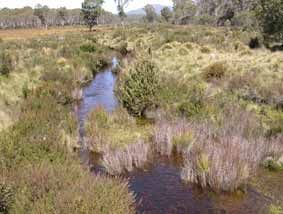Major Group: Crustacea
Minor Group: Malacostraca
Order: Isopoda
Family: Hypsimetopodidae |
Descriptive Features: body generally elongate, colourless
head lacking eyes or mandibular groove
pereon narrow, width close to head width
typhlosole absent, gut round in cross section
pleonites depth in lateral view equal to depth of pereonites, with at most small ventrolateral plates (pleurae), basal region of pleopods visible, pleonite 1 pleura subequal to depth of pleonites 2-5 pleurae
pleotelson lateral length greater than depth
telsonic medial region broadly indented, not reflexed, lateral lobes absent
pereopods 2-3 or 2-4 propodus articular plate either absent or tiny. pereopods 5-7 propodus lacking articular plate, basis dorsal ridge present but only angular, never plate-like.
pleopod exopods 2-5 proximal article distolateral lobes subequal or longer than distal article, endopods 1-5 without marginal setae, pleopodal protopods without lateral epipods
male pleopod 2 endopod appendix masculina distal tip pointed and spine-like, or at least acutely rounded
uropodal protopod ventral ridge lacking long simple setae projecting laterally
rami distal tips pointed, endopod usually lacking robust setae or spurs on dorsal margin
Total length: |

|
Pilbarophreatoicus platyarthricus |
|
|
|
Taxonomic Checklist: Genera
Hyperoedesipus pulmosus Nicholls & Milner
Hypsimetopus intrusor Sayce
Phreatoicoides 3 species (3 undescribed species)
Pilbarophreatoicus platyarthricus Knott & Halse |
|
Distribution: WA, Vic, Tas
Sensitivity Rating: none
Functional Feeding Group: shredders
|

|
Little Navarre River, Tas |
|
|
Ecology: Hypsimetopidae belongs to the suborder Phreatoicidea.
Instream habitat: Phreatoicideans occur in streams, burrows in moist soil, in yabby burrows, ground water and underground streams. Hypsimetopid water slaters are subterranean or at least surface burrowers.
Feeding ecology:
Habit: Many phreatoicidean species are curled under at the end. This spiny posterior is used to push them through the cryptic habitats they favour. The ‘head to toe’ curl is typically a resting or defensive position.
Life history: |
| |
Information Sources: Poore 2002, Wilson 2003 & 2005, Cummins et al. 2005
Key to Genera: Wilson 1999, Wilson & Keable 2000
Key to Species: none |
|
|
|